
|
| Accept Cookies | Customize | Refuse Cookies |
Hbd www.juzaphoto.com/p/Hbd  |
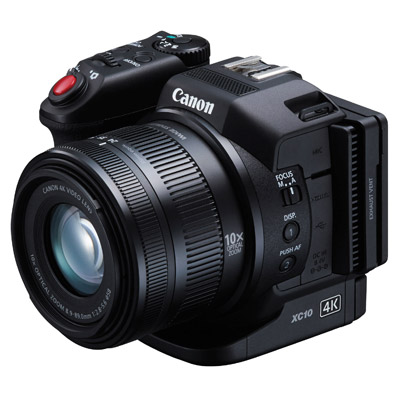 | Canon XC10 Pros: Compactness, battery life, compatibility with LP-E6 and later batteries, image quality in video, EOS Cinema derived software, Active Heat Dissipation System Cons: No dual pixel CMOS, no raw in photo mode, no waveform, lack of a dial and a few additional buttons. I would have preferred two uhs-II sd cards, compared to the cfast+sd combination Opinion: The camera in question, which cost over 2500 euros when new, was a product primarily dedicated to photojournalists. It has a 1-inch sensor with a total of 13.36 megapixels, 4:3 aspect ratio: this guarantees 12 megapixels in photo mode, and video resolutions up to 4k UHD (3840x2160). The video format is therefore similar to super 16mm. In 4k, the machine records at a bitrate of 305 or 205Mpbs, in 4:2:2 (8 bits): with full-hd, the machine records in 4k, then scaling up to 1920x1080. Unfortunately, the only framerates available are 25 and 50p: for reasons unknown to me, the 24fps option is not available. Also, while even the 5d mark II had the PAL/NTSC option, the xc10 intended for the European market is PAL only. The camera has an adjustable (but not articulated) screen: there is no viewfinder, but a loupe is supplied to be fixed to the screen, so as to have a sort of viewfinder. However, by doing so, you lose the ability to take advantage of the screen's touch function. In terms of ergonomics and controls, the machine has a rotatable handle like other models in the cinema series. However, there is only one dial, and there are only a few buttons available. On the other hand, there is an active cooling system. The software is derived from eos cinema, with numerous options: of course there is the Canon log (not log 2 and 3, since the camera records at 8 bits), with which the iso sensitivity starts from 500. There is a built-in 3-stop nd filter. Surprisingly, there are no waveforms or histograms, and you can only rely on the zebra function for exposure. The camera applies an automatic noise reduction, which however cannot be deactivated: it does a decent job, but I would have preferred to have the option to disable it, since with dedicated software you can certainly do better, preserving more useful detail. As far as autofocus is concerned, at the time the dual pixel cmos had already been implemented on several eos cinema cameras, but on the xc10 a contrast detection system is used: tracking and face recognition functions are available, and the system works quite well on static or slow-moving subjects, but when there are more dynamic situations, The gap to Dual Pixel CMOS is obvious. The built-in lens is a 24-200 f2.8-5.6 equivalent: it's not parfocal, but the zoom travel is long enough to have good handling during video. There is optical stabilisation, to which digital stabilisation can be added. Overall, it is still a very versatile camera: I used it, for example, to shoot theatrical essays, where I appreciated the large depth of field guaranteed by the combination of optics and small sensor, so that I could work without problems at the maximum aperture of the aperture. The photographic part, on the other hand, is nothing exceptional: the autofocus is not very performing with moving subjects, the shutter speed is slow, and the camera only shoots in jpeg. I'm convinced that they could have implemented the raw mode with a firmware update: however, evidently Canon marketing had other ideas... On the net I read reviews bordering on the surreal, where self-styled experts compared the xc10 to the bridge cameras of the time. Well, this means you don't have the slightest idea of the product you have in your hand, since the only analogy with a bridge camera is the size of the sensor. On many professional camcorders, small sensors are used for operational reasons, for example to reduce the size of the lenses, but this certainly does not put them on the same level as compact or bridge cameras... sent on January 23, 2024 |
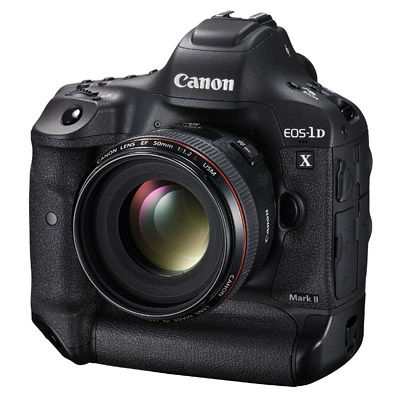 | Canon 1DX Mark II Pros: Image quality, autofocus, shutter speed, buffer, viewfinder, ergonomics, extensive customization possibilities Cons: the Canon log is missing, there is no af-servo mode in live-view for photos, for videos in 4k only the option to record in mjpeg is available Opinion: It is the model that replaced the 1dx and, although on paper some specifications are similar, the machine has been redesigned in its main components. On the autofocus side there has been an improvement in many respects: speed, focus point available (with certain combinations of optics and extenders it is possible to have all the af points active even if the maximum aperture is between f6.3 and f8), operation in low light conditions. In general, the autofocus is more responsive and reliable than that of the 1dx. In terms of image quality, between 18 and 20 megapixels does not change much, but they have greatly improved the dynamic range at iso-based sensitivity. At the higher ones, however, practically nothing changes compared to the old model, in terms of snr and dynamic range (at least if you shoot in raw, since in jpeg the noise reduction implemented by the camera counts a lot). There has been a considerable improvement in terms of buffer: even shooting in raw on both cards, you can exceed 100 shots (obviously depending on the iso sensitivity, scene photographed, shutter speed etc.) continuous. The shutter speed goes from 12 to 14fps, with active autofocus, and you reach 16fps in live view. Unfortunately, in the latter case the af-servo mode is missing, for photos, so the dual pixel cmos can only be used for static subjects. According to the designers, the choice is due to the fact that they had not judged the performance of the dual pixel cmos sufficient (it is a 2016 machine), for an eos 1, so they preferred not to implement this mode. A note: comparisons between the 1dx mark II and the r6 often appear on the forum, and some users claim that the latter exceeds the former "in all". This is absolutely not the case: focus speed with supertelephoto lenses and extenders, shutter speed with the mechanical shutter (and with flashes), shutter lag, configuration options, autonomy, viewfinder without response latencies and with a dynamic range much wider than an evf, are all aspects in which the 1dx mark II outclasses the r6 (not to mention ergonomics, of LCD screens and additional buttons etc.). On the video side, compared to the 1dx there has been an abysmal leap: first of all there is the dual pixel cmos, which allows you to have continuous focus, and also the machine can record video in 4k up to 60fps. There are, however, some limitations. In 4k the machine records only in mjpeg, with a high bitrate: this involves a considerable occupation of space: I suspect that the problem is hardware, in the sense that probably the digic processors would not have been able to handle the h264 compression, in 4k. In 4k, moreover, the machine does not record with the entire width of the sensor, but uses a 4k "portion" of the sensor: even here, I believe that it is a hardware limit, due to the processors and the reading speed of the sensor (which affects the rolling shutter). Finally, while on the 5d mark IV they added the ability to install (for a fee) the Canon log, nothing was done for the 1dx mark II. I had the opportunity to ask canon USA for clarification and, apparently, the problem is not hardware, but they simply have not received many requests for the addition of this function, on the 1dx mark II: unfortunately, Canon marketing still strikes ... sent on February 18, 2022 |
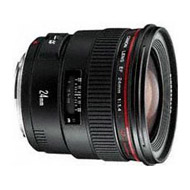 | Canon EF 24mm f/1.4 L USM Pros: Maximum opening of f1.4, contained distortion, footprints and weight lower than newer homologous models, price to use Cons: Microcontracting and correction of aberrations did not excel, spare parts no longer provided by Canon Opinion: It is a lens produced from 1997 to 2008, with an optical scheme that is now of old conception. Those looking for optical performance from macro lens are better off orienting themselves on the other. In fact, especially at the high openings of the diaphragm, the microcontract is low (lower than that of 35 f1.4 L or 50 f1.2 L), and decays clearly in the peripheral areas of the lenses: in addition the chromatic aberrations are not very small, and there are also problems of astigmatism. The vignette is quite marked, as is usually the case with similar optics. On the other hand, the distortion is contained. That said, if you use optics in conditions of use that do not exalt its defects, it is a lens that can still be satisfactory. Personally, I find the low microcontrasto in certain junctures appreciable, combined with the slight veiling given by the spherical aberration that you have at f1.4 (both in the photos and in the videos). The optics are equipped with a usm engine, which ensures a sufficiently accurate and fairly fast focus. As a fairly dated target, Canon no longer provides spare parts, so it's good to be cautious when choosing the used specimen, as repairability can become a serious problem. sent on May 31, 2020 |
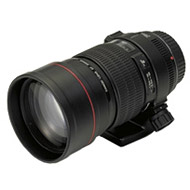 | Canon EF 200mm f/2.8 L USM Pros: Compactness, built-in lampshade, image quality, speed of focus Cons: no stabilizer, only partial availability of spare parts Opinion: A 200mm f2.8 from less than 800g and with a length of 13cm, with a good image quality, can be purchased again for 700 euros. In short, this describes the main attractions of optics: no 70-200 f2.8 is as compact and lightweight. The optics were on the market from 1991 to 1995, and were replaced by version II. After checking the spare parts catalogue, I found that the otic scheme is identical: the lens sets have the same code as the spare parts. They change the lampshade, which on the first version is integrated, and possibly the autofocus circuit, depending on the year of production of the optics. This, together with the structure of other parts of the optics, which however do not affect practical use, although they can create some problems in terms of the availability of spare parts, since the common parts with version II are still provided, while the others are not. Personally I preferred the first version for the lowest purchase price and the built-in lampshade, in order to minimize the footprints during transport. The optics are still valid, optically: the modern 70-200 f2.8 L II/III is usm offer less aberrations and greater microcontrast in the center of the lenses, but lose something in the peripheral areas. The ef 200 f2.8 L usm has an autofocus engine of the ring usm type that, although old-fashioned, provides good performance. The optics are compatible with focal multipliers, however with the 2x the drop in optical yield is really marked, so it is good not to delude yourself: a 100-400 II or 400 f5.6 L usm provide a much higher image quality, at 400mm. That said, the 200mm f2.8 allows for much greater handling, even with the 2x extender, given the limited optical length and low weight. sent on December 17, 2019 |
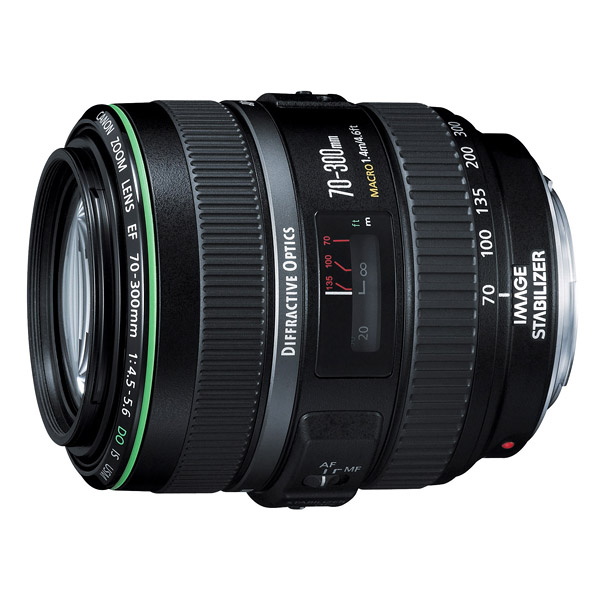 | Canon EF 70-300mm f/4.5-5.6 DO IS USM Pros: Small footprints, contained chromatic aberrations, attractive prices if purchased used Cons: Microcontrast levels not very high, especially canvas side, optics very sensitive to the backlight Opinion: It was the first, as well as the only (at least as of the date of this review) optical zoom produced by Canon with DO technology. This technology allows to contain the dimensions of optics, compared to a traditional solution, wanting an equal level of correction of aberrations: in fact, in the second case it would be necessary a greater number of lenses, with particular materials (e.g. fluorite). On the other hand, the processing is extremely complex, so much so that according to Canon for the DO element the required precision comes to the micrometer: consequently the costs are quite high, and have an unpleasant impact on the price of optics (it is out of production since 2016, although at the moment it is still listed), substantially equal to that of 70-300 f4-5.6 L is usm. In short, the strengths are the small size (at least with the zoom in the wide-angle position) and the good correction of aberrations, as well as good build quality (better than the 70-300 mid-range, which however are less expensive). On the other hand, the microcontrast is not very high, especially on the canvas side: I knew what to expect, and I acquired the conscious optics of such limitation. It is certainly better than a 75-300, but it does not reach the levels of the current 70-300 II is usm. The 70-300 DO has several backlight flare problems: it was one of the flaws of the first generations of Canon's DO targets, with the addition that at the time the anti-reflective treatments of the lenses were not comparable with those of today. With regard to autofocus, the lens was commercialised in 2004, and adopts an old-fashioned ring usm unit, less sophisticated than today's: similar discourse for the stabilizer, noisy and less effective than the current ones. In these respects, the gap with 70-300 II is usm is considerable, since the nano usm unit is very fast, and works better with the dual pixel cmos, especially in movies; the stabilizer of 70-300 is II is quieter and much more effective. In short, unless collector's interests, I would not recommend such an optic: the 70-300 is II is on average higher in all respects, and is new to the figure to which you can find a used 70-300 DO, in a store. In my case, however, the clutter factor was the key point (I own both a 70-200 f4 is and a 100-400 II, but in some cases they are excessively cumbersome and flashy), and I found a specimen of 70-300 DO at a very low price, causing autofocus problems , then resolved with the replacement of the engine usm (150 euros). sent on October 08, 2019 |
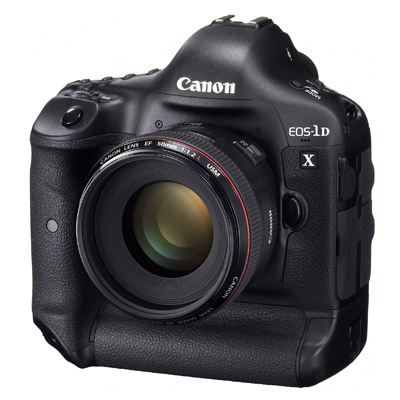 | Canon 1DX Pros: Shooting speed, image quality, focus system, ergonomics, autonomy Cons: Flashy camera, heavy and bulky Opinion: It has replaced the previous 1d and 1ds series, although in practice it is essentially a 1d with full-frame sensor (the role of cameras with high-resolution files was instead acquired by the 5ds and 5dsr). It is a professional model: it is true that this wording is partly due to marketing strategies, but there is also something concrete, which goes beyond the specifics of the individual components. Compared to other coevi eos models, in fact, the af system offers superior performance, the sensor is the one with the best snr side performance and dynamic range, the viewfinder offers more visual comfort, and the mechanical construction/reliability and longevity of the components is on another level, not to mention ergonomics and autonomy. It is not, of course, an ideal camera for anyone, but it undoubtedly offers a point of balance that the other eos do not reach (although maybe they offer files with more pixels etc.). The autofocus is one of the camera's strengths, although it obviously doesn't benefit from the latest technical solutions adopted on the 1dx mark II (which offers a stop advantage in low light conditions, greater stability in maintaining the put and the ability to have up to 61 af operating points, even with optics and extenders with maximum aperture of f8). Image quality side, the only advantage of the 1dx mark II is to have an extra dynamic range stop at iso 100, a benefit that rising with the iso sensitivity gradually shrinks, until it disappears. At high iso sensitivity, in fact, the two sensors are substantially on par (and outperform the various 5d and 6d currently on the market). As for the videos, apart from the fact of not recording in 4k and stopping at 30p in 1920x1080, the real limit of the 1dx, compared to the 1dx mark II, is the absence of the dual pixel cmos. In full-hd the image quality offered by the two cameras is similar, but the 1dx requires a follow-focus or similar system, to record certain types of videos, while the 1dx mark II offers a reliable and easy-to-use focus system. Buffer side, with a tab cf 1066x udma7 you can take more than 40 consecutive photos, in raw (depends a lot on the scene and iso sensitivity set), at 12fps. For those who need the wireless unit wft, i note that the 1dx is compatible with the wft-e6 model, but not with the next wft-e8 (designed for the 1dx mark II): this is annoying, since the latest unit offers several additional features, in addition to the fact that it is more easy to find. sent on July 02, 2019 |
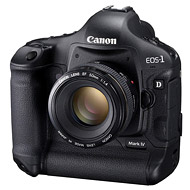 | Canon 1D Mark IV Pros: Value for money, shutter speed, image quality (in relation to sensor format), reliable autofocus system, good autonomy Cons: Inability to adjust audio levels manually in movies, availability of problematic parts Opinion: This is the latest EOS 1 produced with APS-H sensor, and has now been introduced to the market 10 years ago. The command arrangement is similar to the newer EOS 1, although the latter have a second duplicate multicontroller for vertical shooting, plus a few additional buttons: Unlike the previous 1d Mark III, the LCD screen has a resolution Dignified. On the 1DX and 1DX Mark II have improved the ergonomics of the grip, but the 1d mark IV still remains very well balanced, in my opinion. At the launch the 1d Mark IV was the EOS with the best image quality at high ISO, even exceeding the 5d Mark II, whose sensor had noise levels with fixed patterns much higher. Today, however, outclasses all the SLR/mirrorless EOS with APS-C sensor in this aspect: viewing the raw Files The difference is obvious. The EOS 1 have always been models dedicated to specialists, and the 1d Mark IV is in a particular way, because of the format of the sensor: for a systematic use of wide angle lenses may not be the best choice. The Autofocus system was, at the time, the best product from Canon: However 10 years are many, and today even products like the 80d offer an autofocus system that in some respects exceeds that of the 1d mark IV, particularly in low light conditions. However, under less critical lighting conditions, the AF system of the 1d mark IV is on average more stable in AI Servo. Part of the limits is also due to the computing power of the 1d mark IV, and this also limits the focus speed when using teleconvers (even for autofocus hardware limits). With The 1DX there was a definite qualitative leap, and with the 1DX Mark II the detachment has considerably increased. Conversely, it is true that the newer EOS 1 AF systems are more performance-intensive, but at the same time require much more user-side adjustments, to be exploited to the fullest, depending on what you photograph. In any case, the 1d Mark IV is still widely usable, side autofocus. Among other things, it is the only EOS to have the following function: It is possible to select two AF points at the same time (flanked horizontally), so as to increase the area sampled by the AF system. It's a pity that on the newer EOS 1 The thing has been lost, since in some cases it came back very useful. The shutter speed is 10 fps, and the camera supports CF cards UDMA 7: Unfortunately the camera is not compatible with SDXC cards, and therefore the speed of writing with SD is quite low. On the other hand, if you use the WFT-E2 II Wireless accessory, you can connect a compact memory device to the USB port (e.g. Lexar jumpdrive), so as to have the contemporary writing on three memory supports: Obviously the buffer is saturated quickly, but in some contexts it comes in handy. The 1d Mark IV was the second EOS SLR to allow video recording: The image quality is obviously lower than that of the current EOS 1, but it is still usable. The real problem is the impossibility of manually adjusting the audio levels, which forces you to use a preamplifier with "AGC disable" function, if you want to record the audio directly with the camera (and an external microphone, of course). The Curious fact is that Canon has added this feature on both the 7d and the 5d Mark II, via firmware updates, while the 1d Mark IV has been totally abandoned in that respect (although newer than those models). In Summary, the 1d Mark IV is a product in my opinion still valid, but personally I would not recommend it for professional use-or at least not as a primary camera-essentially due to the absence of CPS support, and the spare parts increasingly at risk. sent on March 21, 2019 |
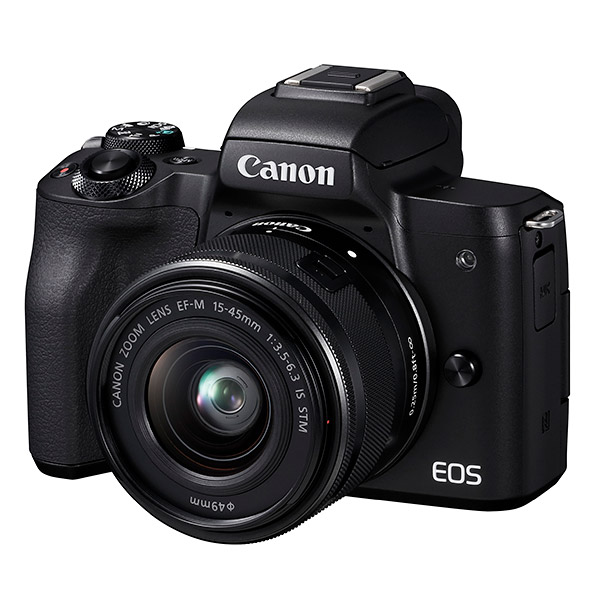 | Canon EOS M50 Pros: Value for money, versatility of use for photo/video, dual pixel CMOS improved, image quality (in relation to sensor format) Cons: Electronic viewfinder, autonomy, video mode limitations, limited amount of buttons and ring nuts Opinion: sent on March 20, 2019 |
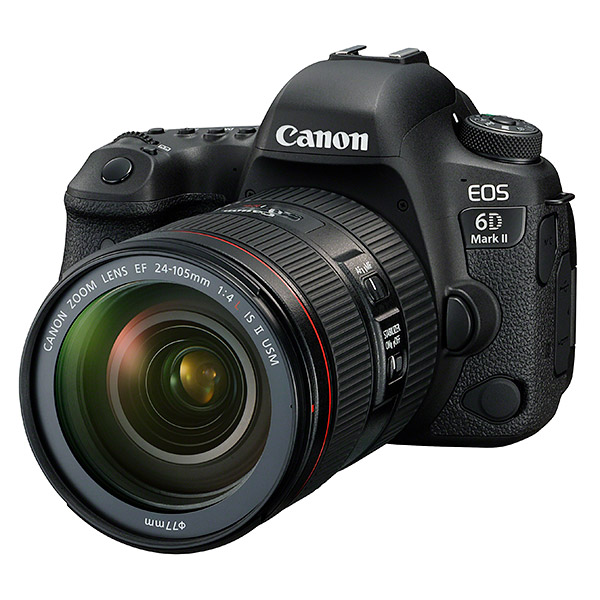 | Canon 6D Mark II Pros: Versatility significantly improved compared to 6d: Autofocus system more responsive and with higher density of autofocus points, higher shutter speed, more advanced exposure system, dual pixel CMOS in Live view/video modes, adjustable screen, More configuration options Cons: Image quality in the video below models such as 5d Mark IV, 1DX and 1DX Mark II, absence of some video functions easily implementable via firmware (usual Canon marketing Rijeka), made to high ISO sensitivity not higher than that of 6d. Opinion: I bought the camera to replace the 6d. The main elements I was looking for were the following: 1) More responsive autofocus system, faster shutter speed and 2 buffer) dual pixel CMOS system for video/Live View 3 modes) Best image quality for both video (sharpness and detail) and photos (in Particular best SNR and dynamic range with high ISO sensitivity). The 6d Mark II satisfies points 1) and 2), and also offers other functions that I found very appreciable, such as the adjustable screen. In addition, the new configuration options for buttons and nuts, as well as additional information in the viewfinder (such as the two-axis active level continuously), allow you to take pictures and change settings without moving away from the viewfinder. Also, since the camera holds the shutter settings for photo/video/Live view separately in memory, it simplifies switching from one mode to another, especially if you want to take pictures and switch to video mode Quickly. The new exposure system handles the white balance much better, eliminating the unpleasant yellow dominant that you have with certain types of neon light: The thing is very useful in videos, where correcting certain problems in post-production can be a Hassle. Other interesting features are the Antiflicker mode and the management of the auto ISO option, which now allows you to set minimum times between a fairly wide range of values (up to 1/4000s). The Flash Management in E-TTL mode is also improved. The autofocus system is similar to that of the 80d. is not on par with that of a 5d mark IV, but it's a significant improvement, compared to 6d: with the 6d Mark II I can also devote myself to photos of moving birds, with an EF 100-400 II, possibly even adding a 1.4 x Extender (remain active 27 Autofocus points). The dual pixel CMOS is very valid in video mode, and has a fairly wide coverage (80% x80%): for the photographic scope, however the area covered by the single area AF is quite wide, and the dual pixel CMOS is not sufficiently responsive, for fast subjects Movement. In any case, it is a viable alternative for landscape photos or possibly slow moving subjects. The touchscreen screen has been useful in many situations, both for videos and for taking pictures in very easy positions. Even for photographs with long exposures, the ability to focus and shoot just by touching the screen avoids transmitting vibrations to the camera, and requires a remote control. Even the wireless mode is improved, and managing focus and shutter remotely is much smoother. At first I had mentioned three points on which I would appreciate improvements. Unfortunately, point 3) is what I found most disappointing: the image quality in the videos is similar to that of the 6d, although there is less aliasing, but less than that of 5d Mark IV, 1DX Mark II and 1DX. The file is on average less sharp, and you have to compensate with an increase of sharpness in post-production, which increases in time necessary to process the whole. In addition, there is the intraframe (All-i) compression format, which is present on the 6d. The addition of the Fuil-HD 60p mode, on the other hand, is certainly welcome. With regard to image quality in the photographic field, there is an increase of 6d megapixels, among the benefits. In Terms of dynamic range and Snr, however, the new sensor gets to the most to equalize the 6d yield. That said, in the printing phase the results are on average better, compared to 6d (thanks also to the increase in resolution), so I can not tell me dissatisfied. In short, a good camera, but that could have been much higher with some investment (side builder) in addition. sent on November 28, 2018 |
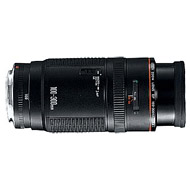 | Canon EF 100-300mm f/5.6 L Pros: Optical yield, price-quality ratio Cons: Engine of focus of old conception, slow and noisy, no stabilizer, spare parts no longer available Opinion: This is the first optical Zoom EF series L produced by Canon, introduced in 1987. The optical pattern was for the period of value, and contained a lens in Fluorspar and a UD to contain the aberrations (the Super UD lenses had not yet been devised at the time). Even today, the optical yield is still valid: In the past I had the EF 70-300 f4-5.6 IS USM, and for microcontrast and containment of aberrations was decidedly less than 100-300 F 5.6 L. Of course, the EF 70-300 f4-5.6 L IS USM exceeds the 100-300 F 5.6 L under such respects, but it is a much newer and expensive product. The optics is equipped with a floating zoom system (like the first 100-400), with a rather short run: There are no blocking systems or clutches to change the effort required to actuate the zoom. The construction of the optics is very different from that of today's L series lenses, and it is not very different from that of the 100-300 F 5.6, although obviously the optical part and some mechanical and structural components are different. In short, it recalls a 70-300 today's medium-range, with wide use of plastic for exterior coatings. The weak point of the optics is definitely the focus. The helicoid stroke is quite high, and an AfD engine is used, rather slow and noisy. During the focus the front of the lens rotates and stretches. The accuracy of the focus is good in one shot, while in AI Servo depends very much on the speed of the subjects: due to the limits of the AfD engine, and the focus circuit, even with high-end cameras (1DX, for example) can be problematic photographing Quick subjects and with sudden accelerations. The stabilizer is obviously absent, since the first EF optic to have one was introduced in 1995. Add to this the problem of spare parts, since Canon no longer provides even a screw. On the other hand, the optics in the subject was the predecessor of the 100-400 F 4.5-5.6 L IS USM, and was output production in the second half of the years ' 90... In Summary, it is still a valid optics in some respects, but for certain types of use it is better to orient yourself on newer products. sent on November 21, 2018 |
 | Canon EF 38-76mm f/4.5-5.6 Pros: Compactness and lightness-cost of purchase content Cons: Very unusual focal length range-just discrete focus speed-strong distortion at 38mm-Optical rendering not great Opinion: The optics were introduced in 1995, at the time of film Reflex. The peculiarity of the product is undoubtedly the range of focal lengths: it is a 2x zoom, but the choice to opt for a 38-76mm, in lieu of a more common (for the time) 35-70 or 35-80, is rather singular. On the manufacturer's sites there is little information, and the optics does not even appear on the volumes of the "EF lens work", on the market from 1992 and systematically updated with the various models of EF optics produced. The only reason I bought the optics is because of the curiosity towards this object: Having found a copy used for 9 euros, on ebay, the purchase was almost obbigatorio. The focus is via a DC micromotor: it is much quieter than the old AfD engines, but more noisy than an USM unit. Also, the focus speed is not very high. The front part of the optics extends, during the focus. The optical yield is in line with that of other contemporary optics, of similar focal length: they were suitable for small prints, say up to A4 format, and even today for such use can still provide a dignified yield. An annoying defect is the distortion that the lens offers wide-angle side: Despite being well 38mm, it almost seems to work with a 28 or 24mm. As an optical emergency zoom, street photography or to have a very compact travel lens, it can have its raison d'être. All if you find it acceptable the range of focal lengths... sent on August 31, 2018 |
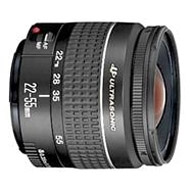 | Canon EF 22-55mm f/4-5.6 USM Pros: Extremely compact and light optics-focal length excursion from Ultragrandangle to normal focal lengths-unshowy and versatile lens, excellent for street photography-purchase price (used) extremely content Cons: -Considerable flare problems (the ghosting is relatively small)-optical rendering not excellent, in terms of microcontrast and containment of aberrations-spare parts no longer supplied by the manufacturer Opinion: It is a commercially introduced optics in 1998, and specifically intended for APS-film SLR cameras (very close to the surface and aspect ratio of an APS-H sensor). Having an EF attack is still usable on all EOS DSLRs so far produced. The primary merit is undoubtedly the compactness: the current EF-S 18-55 are heavier and bulky. Also, being able to switch from a ultragrandangular focal length to a normal one is more than appreciable. The optics equipped with a focusing unit with micro-USM technology: The front of the lens extends, during the focus. The speed of focus is not very high, but at least the noise is quite contained. Since it is a medium-low range optics, at a constructive level we cannot expect the standards of a L-series optics: There is wide use of plastic, also with regard to the bayonet coupling. However, since it is an object from 175g, it does not cause any problems whatsoever. In terms of optical rendering, of course the standards of the time must be taken into account, together with the constraints of encumbrances and costs. Using Fluorspar or UD lenses was therefore unthinkable, and therefore one cannot expect the level of aberration containment and MTF performance analogous to those of a 24-70 F4 is USM. That said, by closing the diaphragm to F8 or F11, the yield is also dignified wide-angle side, for prints up to the A4 format (at the limit working in post production files). The yield in the peripheral areas of the lenses, however, does not improve that much (especially wide-angle side): Of course, correcting the curvature of the field and contain the distortion is rather difficult, without adopting optical patterns of a certain complexity and cost . Therefore, anyone who is critical in terms of image quality is better than evaluate other, but can never have similar levels of compactness and lightness. Another limitation of the optical scheme, partly due to the fact that it was not designed to work with digital sensors, is the backlight: the ghosting is quite contained, but the flare is rather marked, so that the lights of lampposts are enough, in the evening , to cause problems. However, you can also deliberately exploit this to get certain types of effects in your photographs. For street photography, maybe coupled to one of the two EF 55-200 F 4.5-5.6 USM, I find that the EF 22-55 is an interesting option: inconspicuous, compact and lightweight, it allows to have a remarkable versatility of use. The optics can be found used around 50 euros or less: Unfortunately the spare parts are no longer supplied by Canon, so in case of malfunction it is better to look for another used specimen. sent on August 31, 2018 |
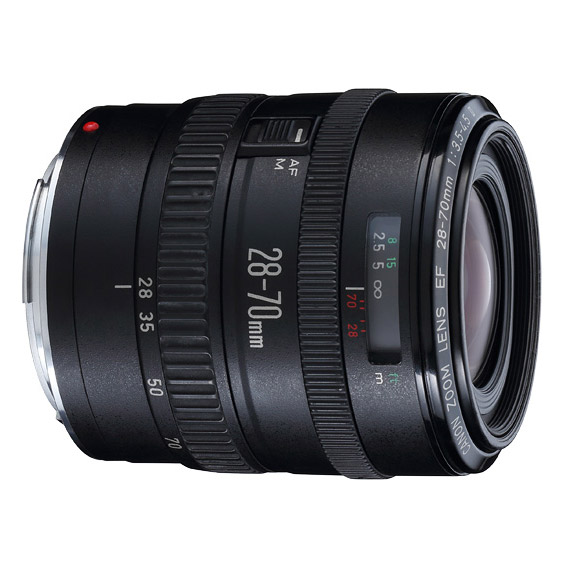 | Canon EF 28-70mm f/3.5-4.5 II Pros: Value for money, compactness and lightness, still decent picture quality. Cons: Noisy afd engine, not always accurate focus with cmos af / dual pixel cmos hybrid systems, no spare parts Opinion: This is one of the first standard zoom lenses introduced for the eos system. I do not know what has changed compared to the previous version, as spare parts catalogs are unobtainable and Canon's first "Ef lens work" release dates back to 1992 when the optics had long since been released for production ... There is therefore no information on the mtf graphics supplied by the manufacturer. rnrnOramai can be found at less than 100 euros (used only, obviously), and compared to today's 24-70 or 24-105 is considerably more compact and lighter.rnrnIs surprised me is the general optical yield: I had very modest expectations, considering the project's design, size and price at which the optic was sold, while still it is still quite usable in terms of the microcontroller offered. Clearly in the peripheral areas of the image, the drop is quite noticeable, especially at wide lenght focal lengths and high diaphragm apertures. Then, it depends on the expectations and the photocin use: With a 5ds / 5dsr, zooming to 100% of the files, the optic limits would be noticeable, especially in peripheral areas of the image. As with other dated optics, the flare resistance is not excellent, and contrast is fairly obvious: however, this is an optic designed at the time of the film reflexes, and not studied to work in coupling to sensors digital. rnrn Focusing is one of the weaknesses of the optic, as the af engine is rather noisy, and the speed is lower than that of a 24-70 or 24-105, though it is not very small. About the accuracy and precision of the focus, in one shot the results are not bad, while in the servo the issue is more delicate, since it depends a lot on the camera in use: curiously, with the 6d mark II the results are better compared to 1d mark IV. It would be interesting to try the optic coupled to a 1dx or 1dx mark II to evaluate the result. RnrnDettoFor street photography, I think that it may still be an interesting goal, as it is not visible, the range of focal lengths is quite versatile, and the image quality is still dignified, especially if the use of more recent optics and cumbersome, it would have the risk of losing the shot.rnrnIf the optic is no longer in business for more than 25 years, the spare parts are nowhere to come unavailable; it is therefore not a point I would recommend for a professional use, where the reliability and repairability both fast and primary. rnrnFor those who are interested in video, the problems I have encountered are essentially three: rnrn- the zoom ring stroke is short enough so it is difficult to handle the focal length changes so that it has progressive transitions. Unfortunately, since it is a very dated optic and with old-fashioned electronics, if you use cmos / hybrid dual pixel systems, cmos af the mass it wasooc may not always be accurate. rnrn- there is no full-time manual focus, and you must intervene on the switch, to switch to the manual focus. sent on November 21, 2017 |
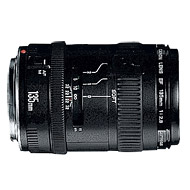 | Canon EF 135mm f/2.8 SF Pros: Compact, soft focus system adjusted to three positions, automatic compensation of the shift focus in the two soft focus mode. Cons: the focusing system now obsolete, although fairly swift. Like other optical relatively dated, the flare and ghosting containment is not exceptional. Opinion: It is very specialized perspective, allowing you to get very specific results in photography from portrait (but also for the landscape can be interesting), and that in my opinion is not suitable for those who look for high levels of micro-contrast to the various spatial frequencies (high sharpness even in the most minute) details. In the latter case, it should opt for other optics, such as ef 135 f2 L usm.rnrnLa main peculiarity is the soft focus mode, obtained using the spherical aberration, which allows you to have some haze in the images, providing a kind dream of effect, which becomes very particular in the presence of reflective surfaces. The intensity of the soft focus mode is adjustable via a selector with three positions (0,1,2): in the first the soft focus mode is switched off, while in the last two there is an increasing level of soft-focus. The telescope's electronics designsta so as to automatically compensate for the focus shift that you have, when you activate the two soft focus mode: the focus must be carried out after adjusting the position of the switch. Not only by the aforementioned switch position, the yield soft focus is also determined by the aperture and focusing distance: canon is not recommended to close the iris over f4, and to maintain a focus distance of 3-5 meters (assuming you work with SLR 35mm camera) .rnrnE 'also determining the exposure, and a soft light can make it even more obvious progressiveness with which the optics contrasts in question are made: you have to experience, to get good results, and often it takes some practice. sent on January 10, 2017 |
 JuzaPhoto contains affiliate links from Amazon and Ebay and JuzaPhoto earn a commission in case of purchase through affiliate links.
JuzaPhoto contains affiliate links from Amazon and Ebay and JuzaPhoto earn a commission in case of purchase through affiliate links.May Beauty Be Everywhere Around Me